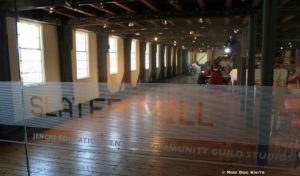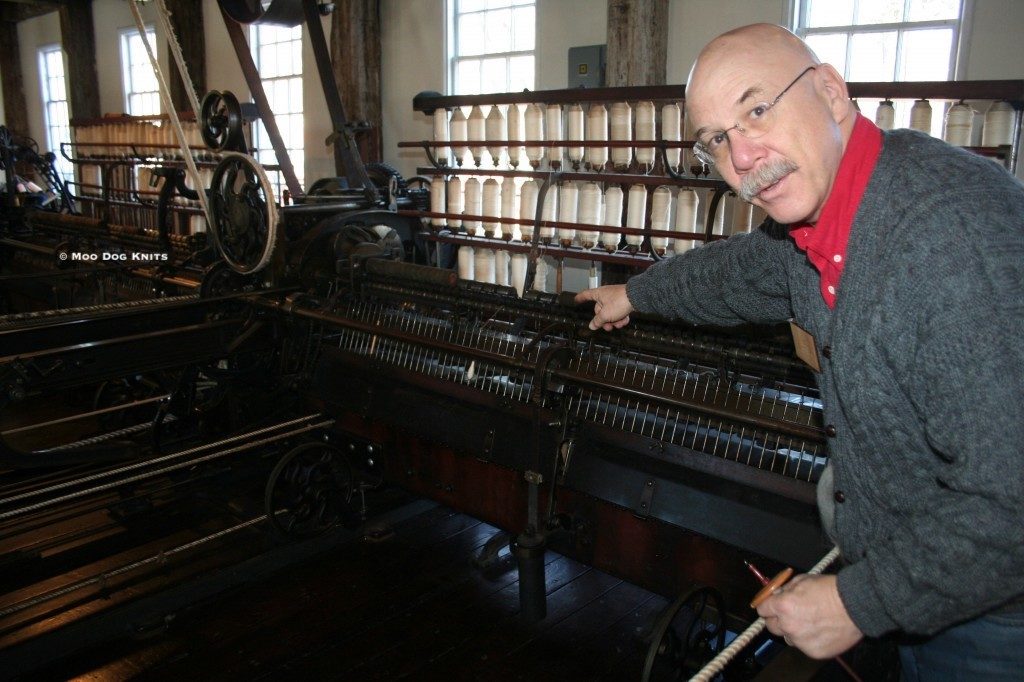Rhode Island is not an island of course, though the shoreline of Narragansett Bay in the Atlantic Ocean totals some 400 miles. At 37 miles wide and 48 miles long, the state offers oceans of places to explore.

Threads of human history shuttle in and out and around a complex of buildings that still stand on a point of land near the Blackstone River. Water that once transformed raw fibers into thread and yarn through a series of processes flows by. The children and women who spent their days here are now gone but exhibits testify to their lives. The Slater Mill was the “first successful cotton factory, and the first water-powered spinning mill using the Arkwright system of carding and spinning in North America” according to the Library of Congress Historic American Engineering Record.
Innovation is still happening here. Home to the Community Guild Studios (CGS) and as a fiber arts center, Slater Mill is where talented artisans and artists forge connections. And that’s only part of the story.
Slater Mill and Community Guild host an annual knitting weekend. (Note: this story was done in 2013; here is a link for 2018). Offerings for fiber arts and learning are offered year round. Tours are by appointment during off season.
While sold-out classes were in session upstairs, the lure of yarn and vendors at the marketplace interspersed with textile history and machinery proved irresistible. Two crib-like stacks of new wooden beams supporting a steel beam overhead crane drew my attention. Underfoot is a floor window that provides a view of gear-like parts. Having postponed an in-depth tour graciously offered by Bernadette Vaughan, coordinator at CGS, (for a return visit in warmer weather), what new work is happening below the old mill?
Around the corner, Dave Westcott of the Rhode Island Spinners Guild, provided in some answers in a conversation sparked up by a spinning jenny.
More about the marketplace and what we saw, next.


